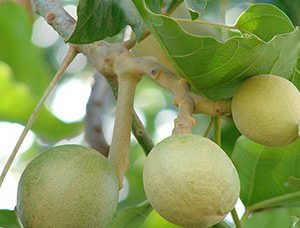
MinerAlert

MinerAlert
Aleurites moluccana
Euphorbiaceae
Akhoda, Belgaum walnut, Candleberry, Country walnut, Dau lai, Indian walnut, Jamaican walnut, Kukui, Lumbang oil, Shi Li Zi, Tuitui, Nois des Moluques, Otaheite walnut, Singapore nut.
Árbol de Indias, Avellano, Nogal de la India, Nuez de Brasil, Nuez de la India, Palo de la India, Palo de nuez.

The tree is originally from Indonesia, but is now cultivated in the West Indies and South America, especially in Brazil.
Safety/Precautions:
Before you decide to take any medicinal herb or herbal supplement, be sure to consult with your health care professional first. Avoid self-diagnosis and self-medication: Always be on the safe side!